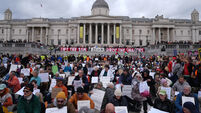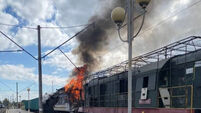One million people face death in Sudan
Throughout the bright orange plains and gentle hills of Sudan’s Western Darfur region the stories are all the same. Here, scattered in more than 30 makeshift encampments upwards of one million people, mostly women and children, face likely death unless humanitarian organisations can organise quickly enough to deliver sufficient shelter and food.
Even with the best efforts of aid agencies, it is expected that hundreds of thousands of these people will perish before enough help arrives. “Regardless of what we do, up to 300,000 people will die anyway,” the UN’s Sudan chief, Mike McDonagh, said yesterday.
Human rights groups say that Arab militia, known as the Janjaweed, are responsible for carrying out a mass scorched earth policy against black Africans in the region, raping the women and killing the men.
UN secretary general Kofi Annan has described the area as the World’s worst humanitarian disaster. However, has so far stopped short of calling the Dafur crisis genocide.
Although the evidence shows otherwise, the Sudanese Government denies it has armed the Janjaweed and helped their attacks by strafing and bombing villages with helicopter gun ships.
In Sudan’s capital, Khartoum, Government officials express their satisfaction that the situation is under control.
They warn the UN against allowing sanctions against Sudan.
Speaking to Development Minister Tom Kitt and Irish reporters in West Darfur yesterday, Darfur’s state commissioner Seliman Abdella Mahmad denied any Government involvement and blamed Christian rebel groups opposed to the Government for the mass displacement of people. “The situation here is excellent. Things are stable. Our military forces here have always been, and they are still going after this group of militants,” he said of the Janjaweed.
However, on the streets of El Genina, close to Sudan’s border with Chad, Janjaweed militants could be openly seen yesterday, some wearing Government military uniforms.





